Our next overnight stop was Cambrils, a little over 20 miles to the north of Ametlla. That left plenty of time beforehand for us to visit the small village of Miravet some 30 miles east of Ametlla.
I had been told Miravet was a pretty enough village to warrant the short detour but; it was the castle’s history which most interested me. I knew it to have been the headquarters of the Knights Templar across Catalan and Aragon and one of the best preserved examples of a Cistercian-Romanesque Castle-Monastery in the whole of Spain. It was also one of the last holdouts of the Order after the Templars were abolished by the Catholic church. The castle was a must-see for me.
The route took us along the TV-3022 to the Mitravet Ferry Station where an old style ferry, a Pas de Barca, would take us across the River Ebro to the village itself. A Pas de Barca comprises two punts, topped with a wooden platform, which is linked to both banks of the river by a thick metal cable. The ferry operator makes use of the cable and the river’s current to propel the boat over the water. This type of transport was used all along the river until the 1960’s but only two remain in service, one being at the Miravet crossing.
We reached the Ferry Station to discover the ferry was out of service. There had been a lot of rain and the river was running too high and fast. We had to drive the long way around to Miravet via Mora d’Ebre but, honestly, having seen photos of the ferry at the crossing point, I wasn’t too disappointed. I cannot imagine such a small craft being able to safely carry a fully laden 7 metre motorhome across such a wide and fast flowing river (especially after Vanya had stocked the Van up with Cremant).
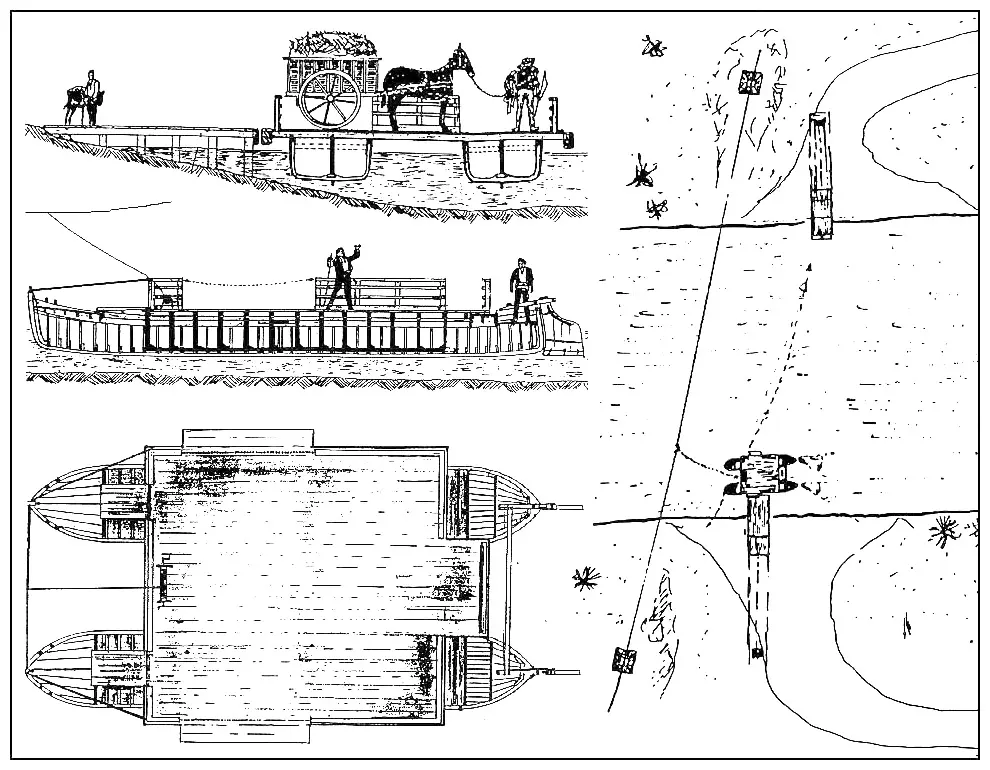
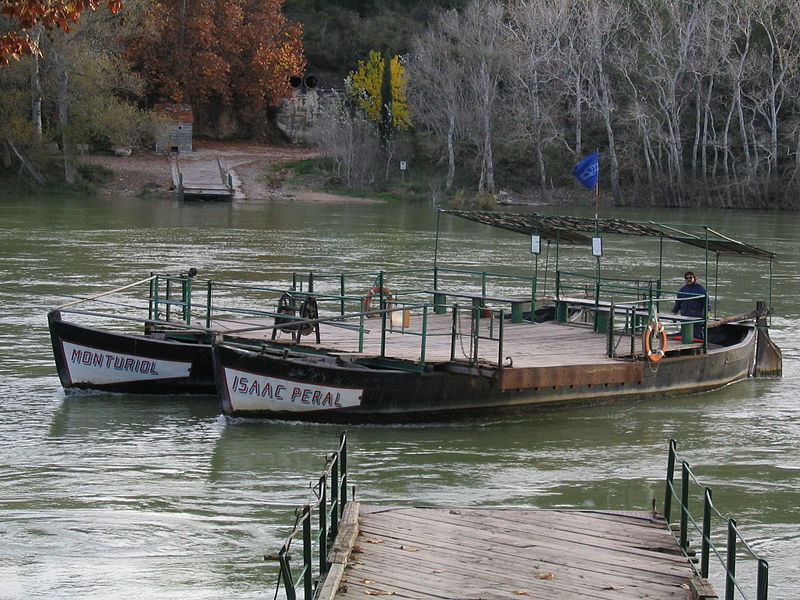
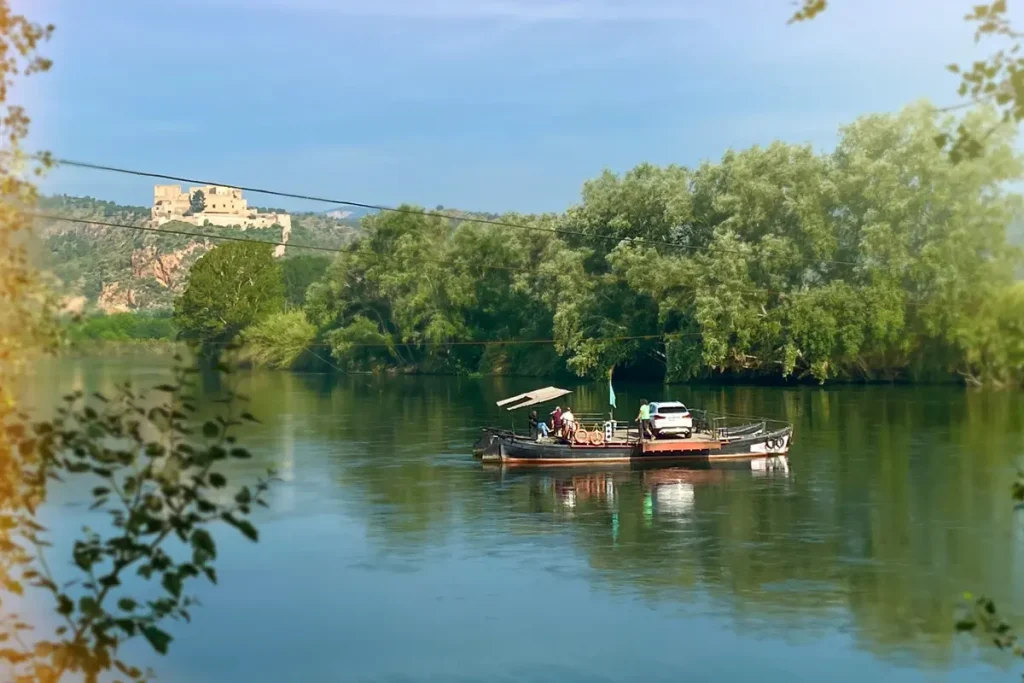
The diversion through Mora d’Ebre (Ebre is Catalan for Ebro) added just 20 minutes to the journey and we were soon parked up on a place reserved for motorhomes on the Partida Illetes just a short walk fom the village. The castle and village looked impressive from where we parked the Van but even more so from the small pier on the River Ebro.
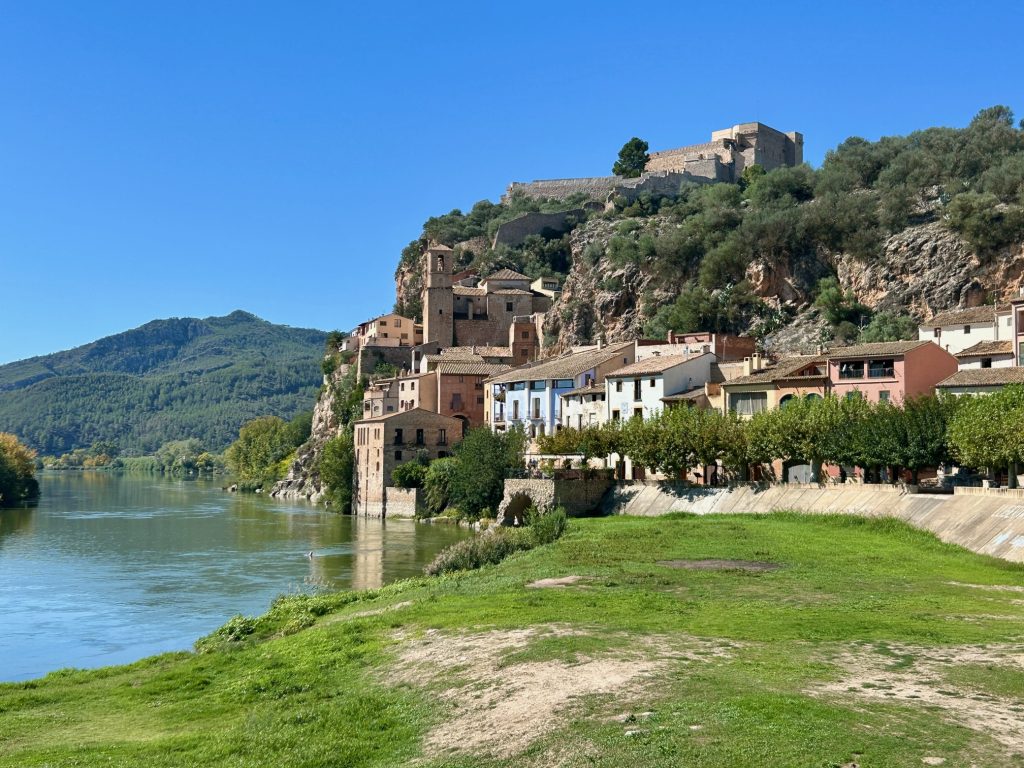
A nearby tourist map helped us get our bearings and we were soon making our way up into the historic centre of Miravet. The narrow lanes of this old town cling to the side of a short but fairly steep 80 metre high hill to the castle. We didn’t expect Nala to make it all the way up in her walking wheels but we figured that if she could make it to the church we would get some reasonable views over the river before pausing for lunch. I would make my way up to the castle during the afternoon.
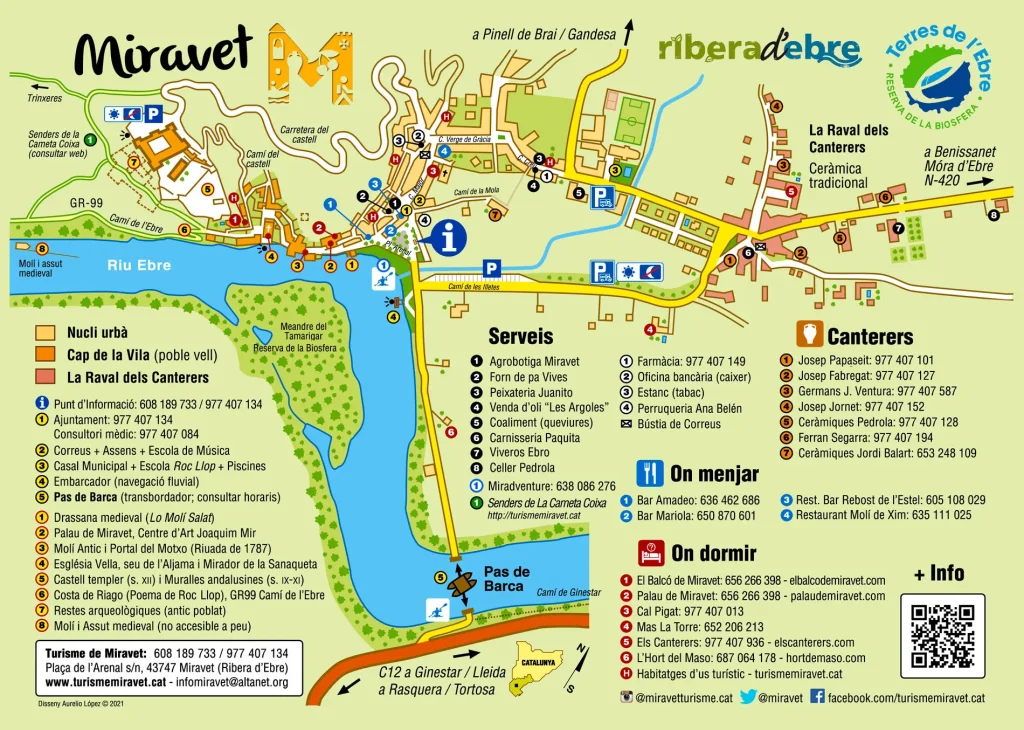

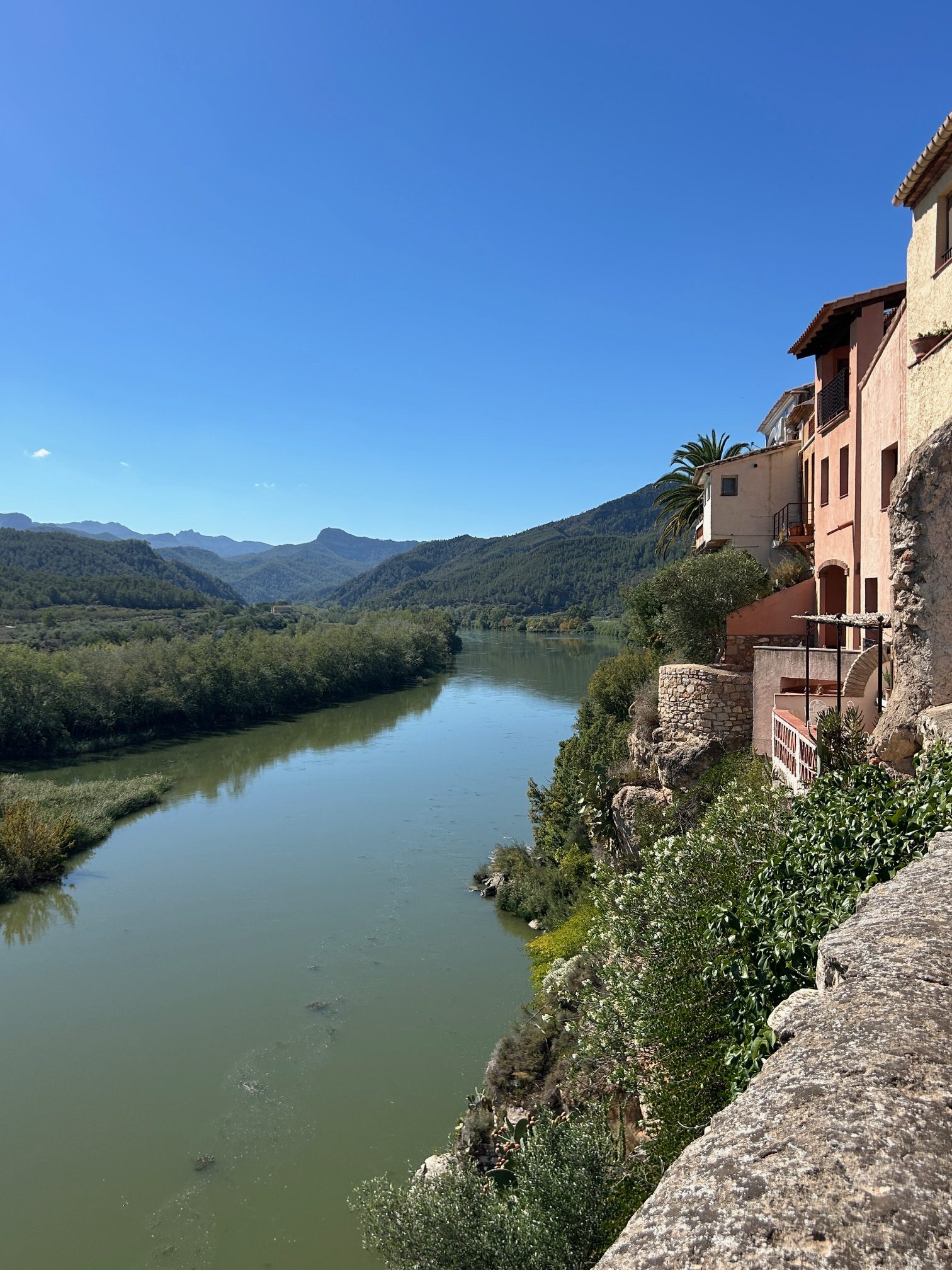
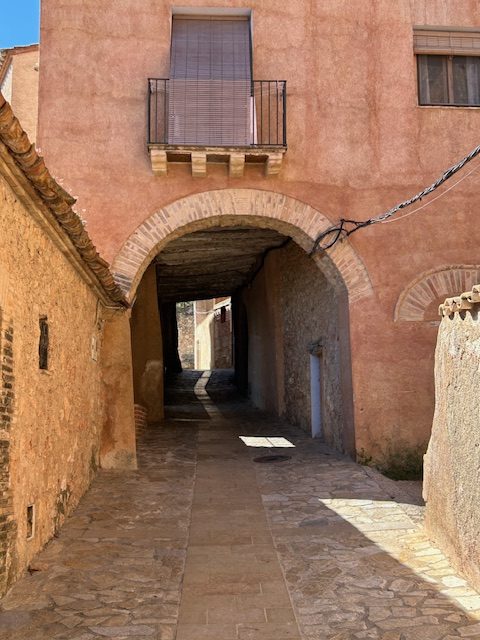
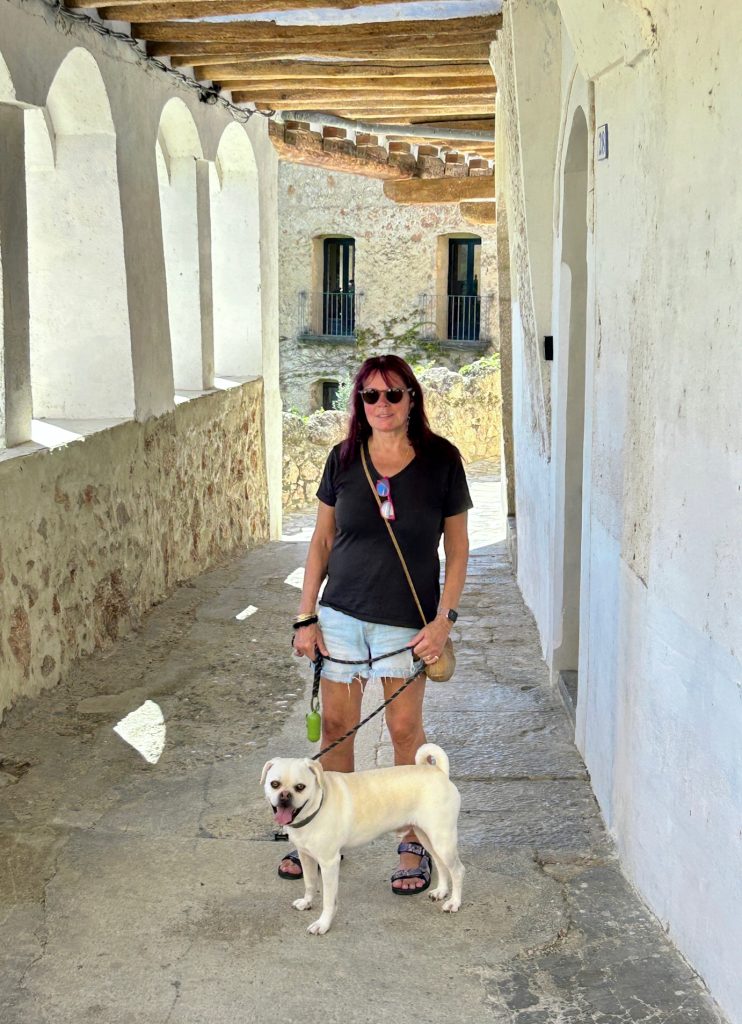
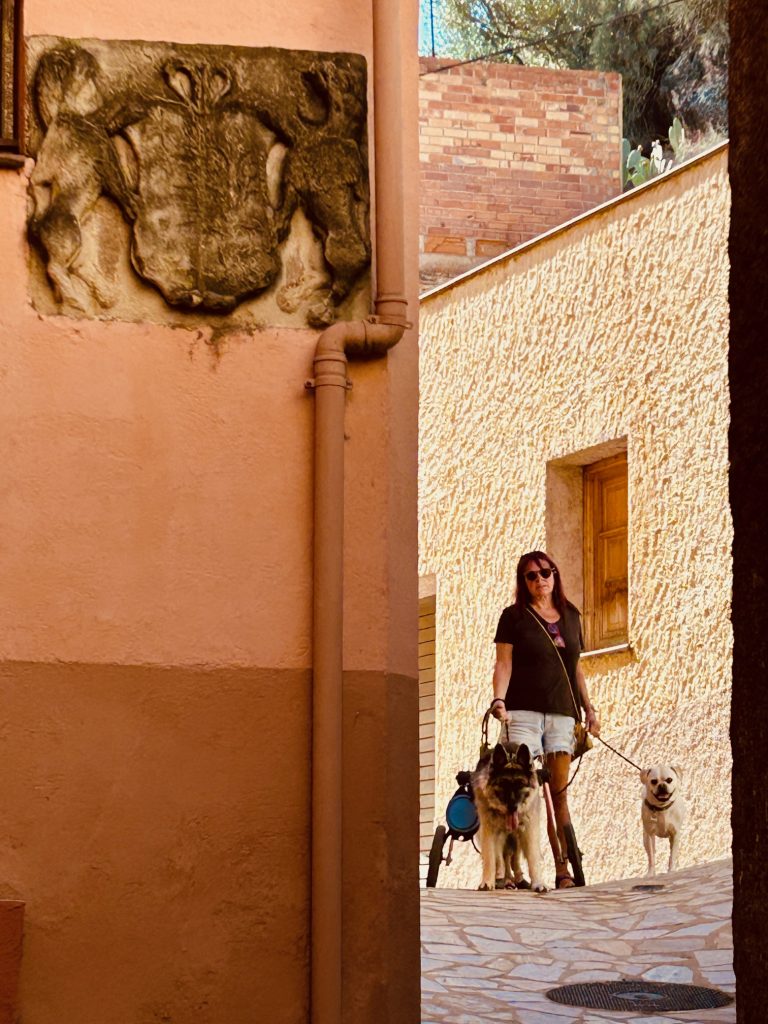
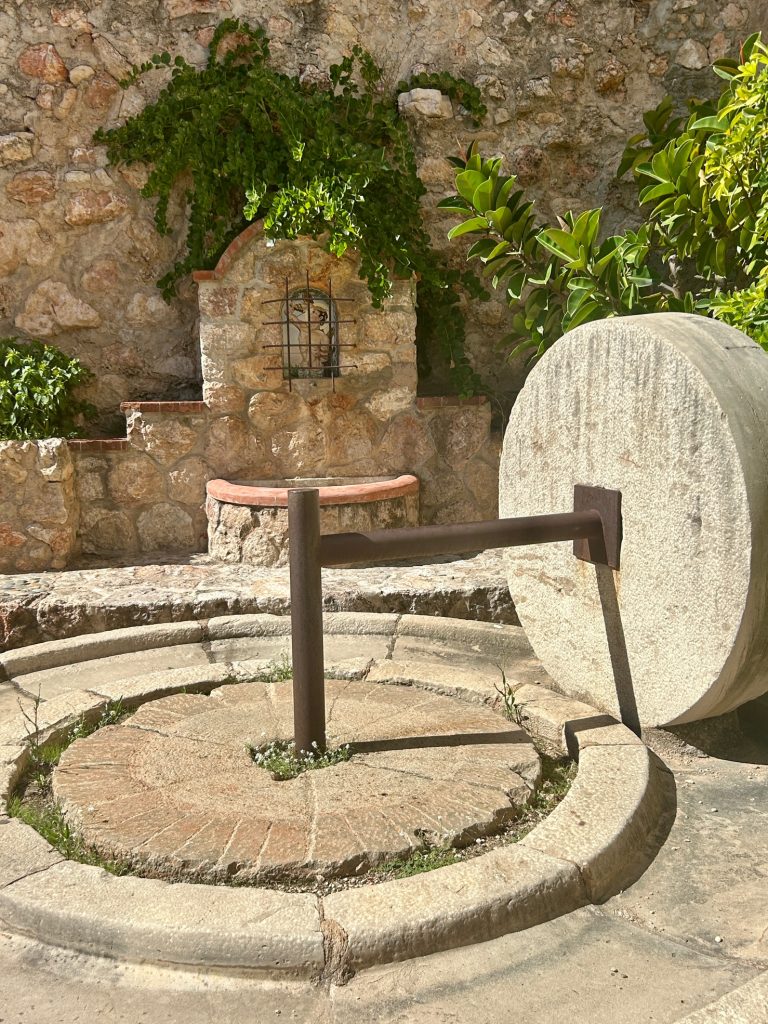
The Renaissance style church, the Esglesia Vella, was built by the Order of the Hospital of St John of Jerusalem (the Knights Hospitallers) during the 16th/17th centuries. It was built on the site of an old Almoravid Mosque; the Almoravid’s being a sect of fanatical Muslim monks. Much like Miravet Castle, the church has seen more than it’s fair share of troubles and I would very much liked to have gone inside to learn more about the building but it was closed.
I know it was badly battered during the Spanish War of Succession in the early 18th century and; again during the many Carlist Wars of the 19th century but; it was the damage caused to the building during the Spanish Civil War, when anti-clerical riots saw the church spoiled in 1936 and then bombed during the Battle of Ebro in 1938, which led to it being abandoned. The church was restored in the 1980’s but, having been deconsecrated, is now used only to house exhibitions and the odd civil wedding but there are, supposedly, many traces of it’s former glory to be seen inside the building.
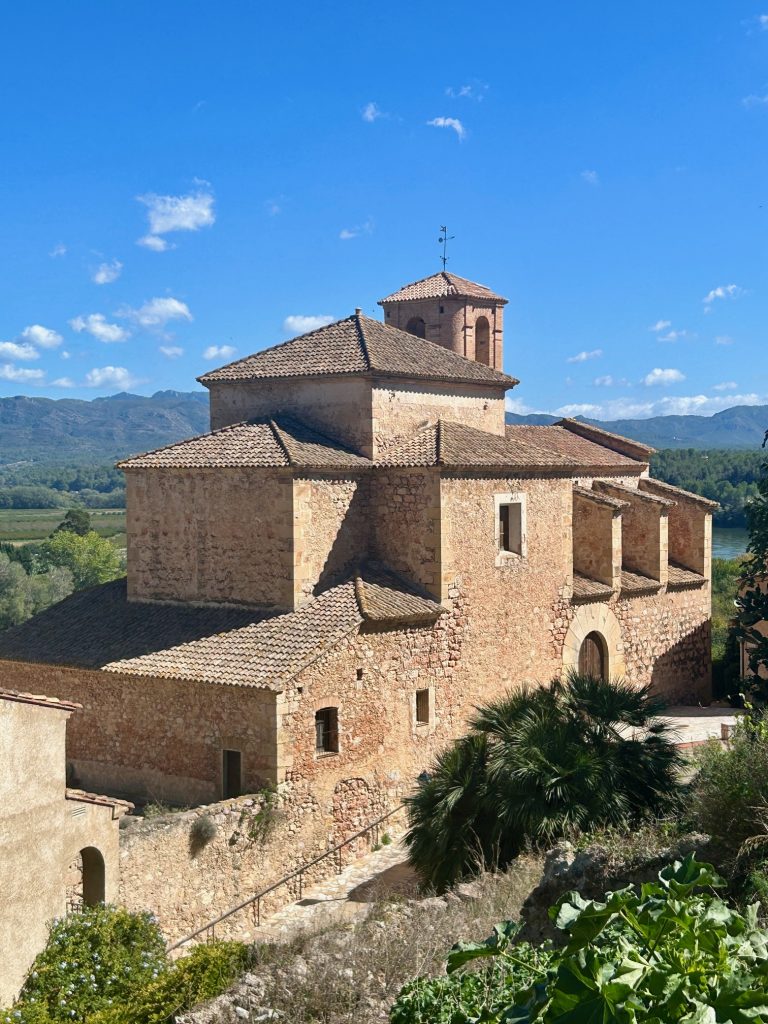
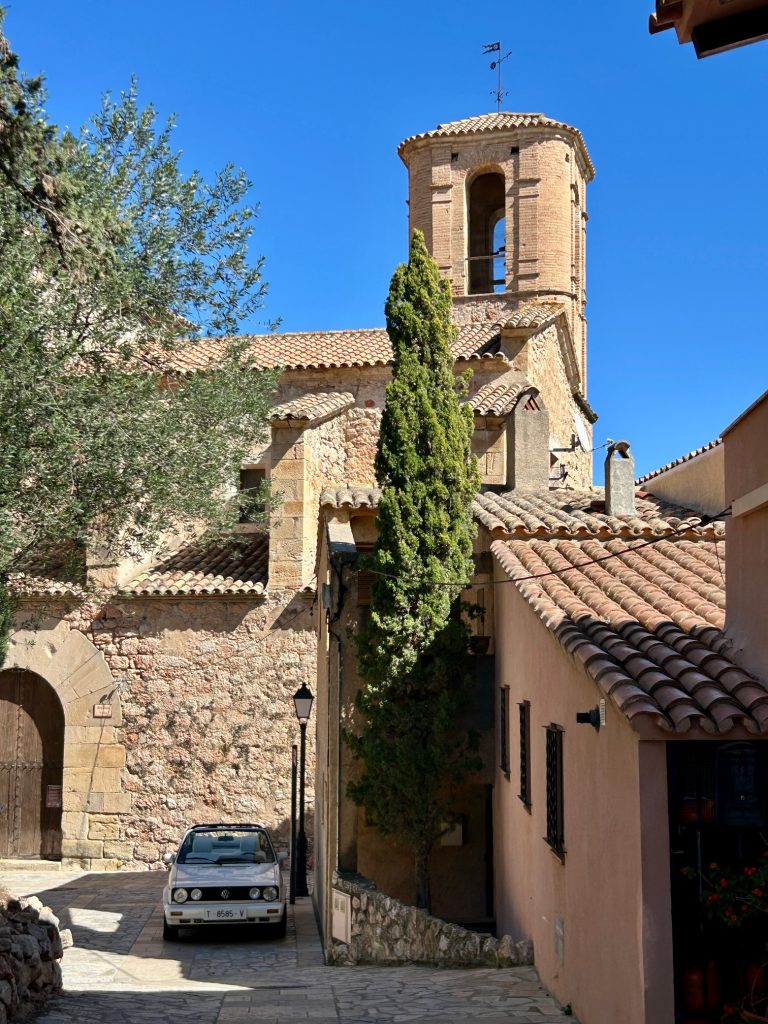
Disappointed not to have got inside the church but buoyed at the thought of seeing the castle later in the day, we retraced our steps to the Platja de Miravet where a pop-up food bar (that’s what they call burger vans now lol) served burgers and small selection of tapas patatas. I’m not complaining; the Van served cold beers and hot patatas bravas.
After lunch I escorted Vanya (and the dogs) back to the Van and then set off back up the hill to the castle. I made it and the views were all that I expected them to be.
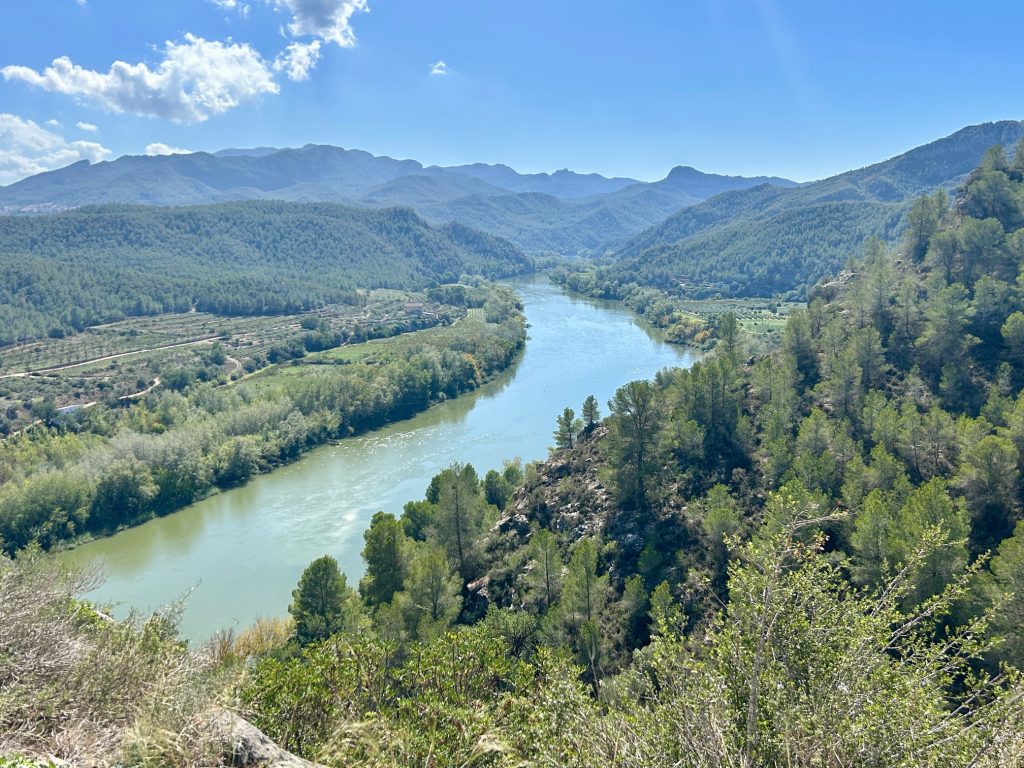
It’s the history of the castle which most impressed me. It was the Moors who first built a castle on this site because of it’s commanding position over the River Ebro. A village followed. Both the castle and the village were seized from the Moors in 1153 by the Knights Templar on behalf of King Ramon Berenguer IV of Catalonia and Aragon. He then gifted them to the Templars for services in the wars against the Moors and the Templars remodelled the castle into the imposing fortress it is today.
The Templars also encouraged the repopulation of the area by Christians but, on a bright note, tolerated those Moors who chose to continue living in Miravet. However, the writing was on the wall for Templars and Moravet Moors alike after the Templars were later outlawed by the French King Philip IV (he sought the Order’s riches) and abolished by his puppet Pope Clement V (for heresy and various other trumped up charges).
The Knights Templar went first; wiped out in a long and bloody war by Catholic armies and with many Templar prisoners later being burned alive at the stake as heretics. Miravet Castle was the last Templar castle to fall (early in the 14th century). It is said that six knights refused to surrender even after the castle capitulated and all six died in the castle’s tower trying to protect the Order’s archives. The Pope subsequently gifted the castle to the Knight’s Hospitaller. That’s the same Hospitallers which later built the Esglesia Vella church.
As for the Miravet Moors, they continued to be tolerated until about the time the Jews were expelled from Spain but only if they renounced Islam and converted to Catholicism. The majority of Moors did convert to but were later betrayed by the Catholic church and deported to Algeria.
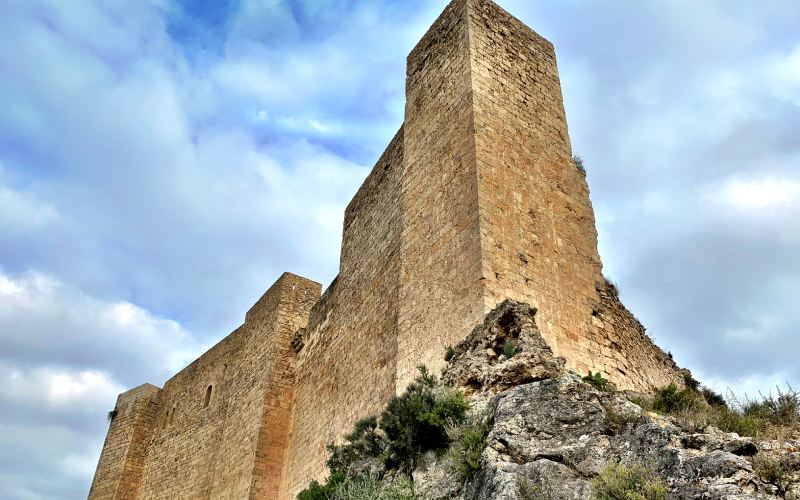
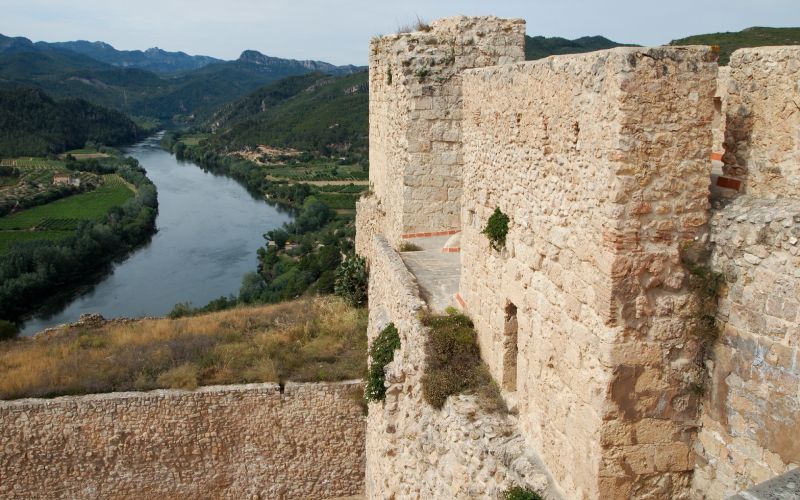
It was time to move on. We were due in Cambrils.

